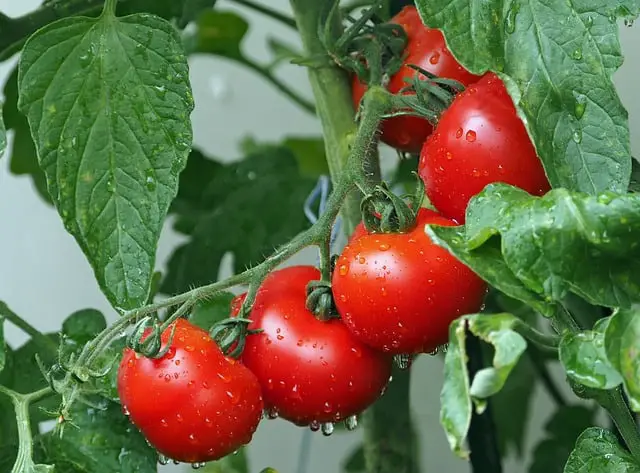Due to their appetizing flavor and rich nutrition, tomatoes are one of the most popular vegetables in the world. Tomatoes are commonly found in many homes because they’re easy to grow and do not take up much space.
Even though these vegetables are easy to identify, you can get confused when you see plants that look like tomato plants. It is important to know the difference between tomatoes and their look-alikes to prevent the consumption of toxic plants.
In this article, we will list and discuss 9 plants that share a resemblance with tomatoes. Get comfortable and keep reading to learn more!
9 Plants That Look Like Tomatoes
Other look a like posts:
- Weeds That Look Like Succulents
- Plants That Look Like Raspberries
- Flowers that Look Like Babys Breath
- Flowers That Look Like Feathers
1. Tomatillos (Physalis philadelphica)
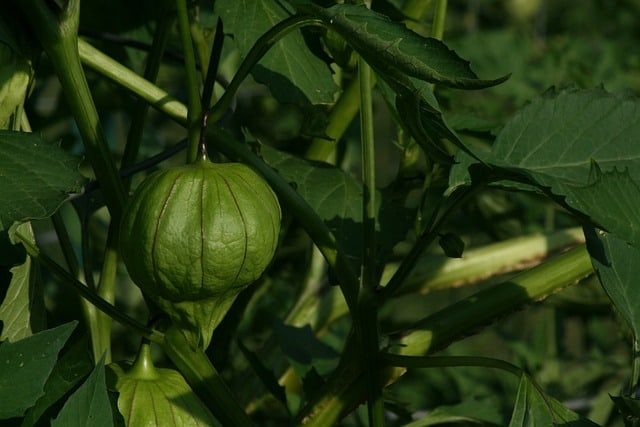
With their physical features and names, tomatillos look similar to tomatoes. Native to Mexico, tomatillos are perennial plants that are majorly cultivated for agricultural purposes. Other names for tomatillos include Mexican husk tomatoes, large-flowered tomatillos, and Mexican ground cherry.
While tomatillos can tolerate different soils, they prefer fertile, well-drained soil. Being cold-sensitive plants, tomatillos grow well in temperatures between 77 and 90 degrees Fahrenheit.
These tomato look-alikes can be eaten in their raw form or when cooked. Tomatillos are a key ingredient in many Mexican sauces. They are also used in preparing salads, stews, desserts, and in baking.
2. Tamarillos (Solanum betaceum)

Tamarillos are native to Peru, Chile, the Andes, Argentina, and Ecuador. But these plants can be cultivated in subtropical regions in different parts of the world. They are fast-growing plants with clusters of 10–50 pink-white flowers. Each cluster usually has 1 to 6 yellow, orange, purple, or red egg-shaped fruits.
While the yellow and orange fruits have a sweet taste like mangoes, the red fruits taste sour. Other names for tamarillos include tree tomato, blood fruit, tomate serrano, and tamamoro.
Due to their shallow roots, tamarillos cannot withstand powerful winds. These plants are also sensitive to frost and drought. Tamarillos can be eaten raw or used in the preparation of juices, sauces, and purees.
3. Peruvian Groundcherry (Physalis peruviana)
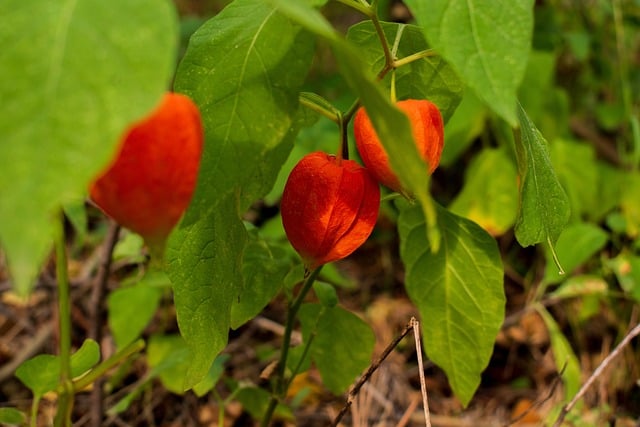
Peruvian ground cherries also made the list of tomato plant look-alikes. But unlike tomatoes, the Peruvian ground cherries are enclosed in a husk.
Although it is a South American plant, the groundcherry is native to Columbia, Ecuador, and Peru. Other names for the Peruvian groundcherry include goldenberry, and Cape gooseberry.
The Peruvian groundcherry is related to tomatillos as a member of the Solanaceae family. When the plant matures, it produces sweet berries that look like small tomatoes. The calyx that covers each fruit is one thing that makes the goldenberry stand out.
When the temperatures are between 55 and 64 degrees Fahrenheit, the Peruvian ground cherries will grow well. They also thrive in full sunlight and well-drained soil.
While goldenberries can be eaten raw, they can also be used for making jams, puddings, sauces, and sauces.
4. Persimmons (Diospyros kaki)
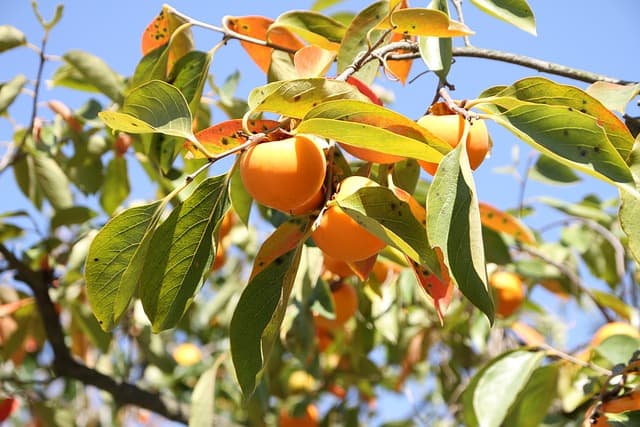
Not only do persimmons have the same crown as tomatoes, but they also have similar shiny skins. Persimmons originate from Asia but can be grown in the U.S., Spain, and Brazil.
These fruits are usually in season around September to December. When fully mature, the persimmon plant produces yellow-orange, red-orange, or pale yellow fruits.
Persimmons can be eaten raw, cooked, or dried, and their seeds can be used for making tea. In some cultures, persimmons are used in the preparation of puddings, salads, cakes, and pies.
5. Red Gooseberries (Ribes Uva-crispa)

There are different varieties of gooseberries that can come in green, yellow, or purple. But the red gooseberries look similar to tomato plants. The European gooseberry, or Ribes grossularia, one of the gooseberry species, is native to North America. And the American gooseberry, or Ribes hirtellum, is native to the Central and Northeast United States.
Extreme summer heat can damage gooseberry plants; they thrive in cool and moist places. Gooseberries can be eaten raw or used in preparing jams, teas, wines and desserts.
6. Carolina Horse Nettle (Solanum carolinense)

Due to the similar features, you’ll think the Carolina horsenettle is a tomato. But unlike tomatoes, these perennial plants have prickles that can cause harm to the skin. Carolina horse nettle is native to the southeastern United States but has spread to North America. In some parts of Asia, Australia, and Europe, these plants are considered invasive.
Immature horse nettle fruits are easy to identify with their dark green color and light green stripes. But as the plant matures, the berries change to yellow.
Due to its toxic nature, the Carolina horsenettle is inedible. Ingesting any part of the fruit can cause symptoms such as vomiting, diarrhea, stomach pain, or respiratory problems.
7. Red Soda Apple (Solanum capsicoides)
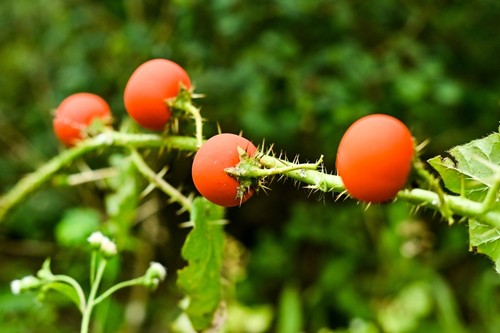
For beginner gardeners, it can be hard to tell the red soda apple, also known as cockroach berry, apart from tomatoes. However, the plants are usually covered in spines, including the large leaves.
Although it is native to eastern Brazil, the red soda apple can be grown in other tropical regions. As its name suggests, the red soda apple is usually red when ripe and small, like tomatoes. But the fruit’s skin and seeds contain toxins, which makes it unsafe to eat.
In places including South Africa, China, Hawaii, and Taiwan, the red soda apple is considered an invasive plant.
8. Sweet Cherry (Prunus avium)
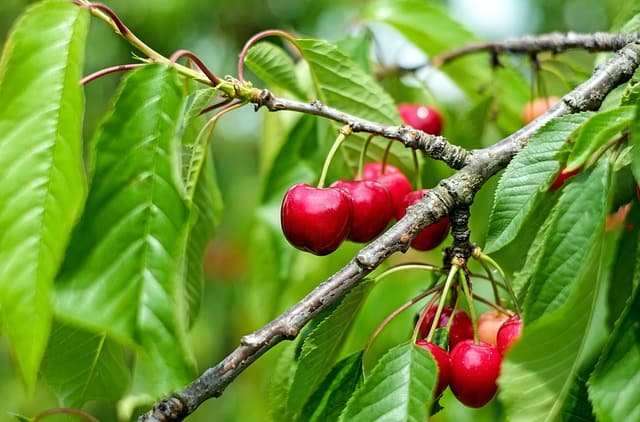
Sweet cherries, also known as wild cherries or bird cherries, are native to different regions, including Europe and Western Asia. From early to mid summer, the plant produces shiny, round, and reddish fruits that look like small tomatoes.
When the fruits are ripe, the sweet cherry tree is highly attractive to birds and other small animals. While the sweet cherries can be eaten raw, the fruits can also be used for jams, desserts, and drinks. When eating the fruit, avoid its seeds as they contain hydrogen cyanide, which is toxic.
9. Eggplant (Solanum melongena)
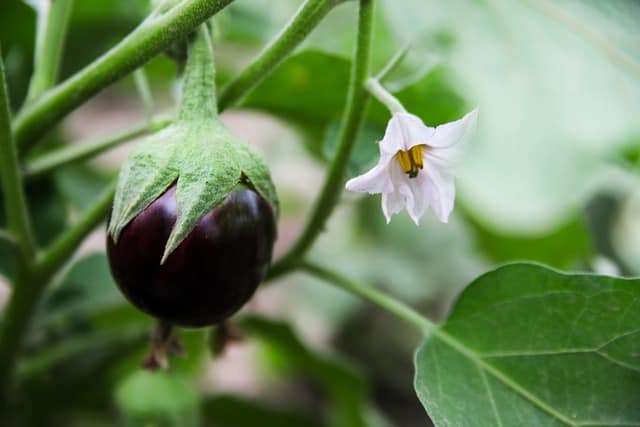
During their developing stage, the eggplant fruits share a resemblance with tomatoes. Also known as aubergine or brinjal, eggplants are tropical plants that are mostly grown in temperate climates.
There’s a belief that eggplants originate from South Asia, India, or Africa. However, they can be grown in different parts of the world. Eggplants grow perfectly and produce fruit in hot weather.
Like tomatoes, pests such as aphids, spider mites, flea beetles, and water flies tend to attack eggplants. But these pest problems can be prevented by practicing good hygiene.
Most eggplant cultivars have fruits that are egg-shaped and have a glossy skin. When eaten raw, the fruit tastes bitter. But the fruit tastes better and its texture becomes softer when cooked.
Final Thoughts
Even if you’re a pro gardener, you may get confused with some of these plants that look like tomato plants. But with the right guide, it will be easier to tell these plants apart.
We’re sure you can now differentiate a tomato plant from plants that look similar to it. Before harvesting these plants with your tomatoes, be sure they’re not toxic. While some of these tomato look-alikes are edible, others are highly poisonous. Prevention is always cheaper, safer, and better than cure.
Frequently Asked Questions
What Looks Like Tomatoes But Isn’t?
Tomatillos are plants that look like green tomatoes, but they are not. Due to their striking resemblance with tomatoes, tomatillos are translated as “little tomatoes” in Spain. Also known as “husk tomatoes,” tomatillos are more acidic and less flavorful than tomatoes.
In addition, tomatillos are enclosed in a husk compared to tomatoes. But like tomatoes, tomatillos can be eaten in their raw form or when cooked.
What Looks Like a Tiny Tomato?
Black nightshade is a plant that looks and smells like a baby tomato. Its flowers are usually white and star-shaped. And it produces small berries that are believed to be poisonous when green.
Ripe berries are the size of a blueberry and are dark purple. Unlike tomatoes, black nightshades are toxic to humans and some animals. If ingested, these plants can cause a wide range of problems, including diarrhea, stomach pain, vomiting, and shock.
How Do I Identify a Tomato Plant By Its Leaves?
Tomato leaves are easy to identify with their serrated edges. Besides, when you touch the surface of a tomato leaf, it will feel fuzzy. Tomato leaves are also compound with several leaflets growing along a stem known as a rachis.
Another way to identify a tomato by its leaves is the pungent smell that lingers on your fingers when you touch them.

Hey, I’m Lisa and I’ve been an avid gardener for over 30 years. I love writing, talking and living in the garden! Feel free to connect with me on my socials below

